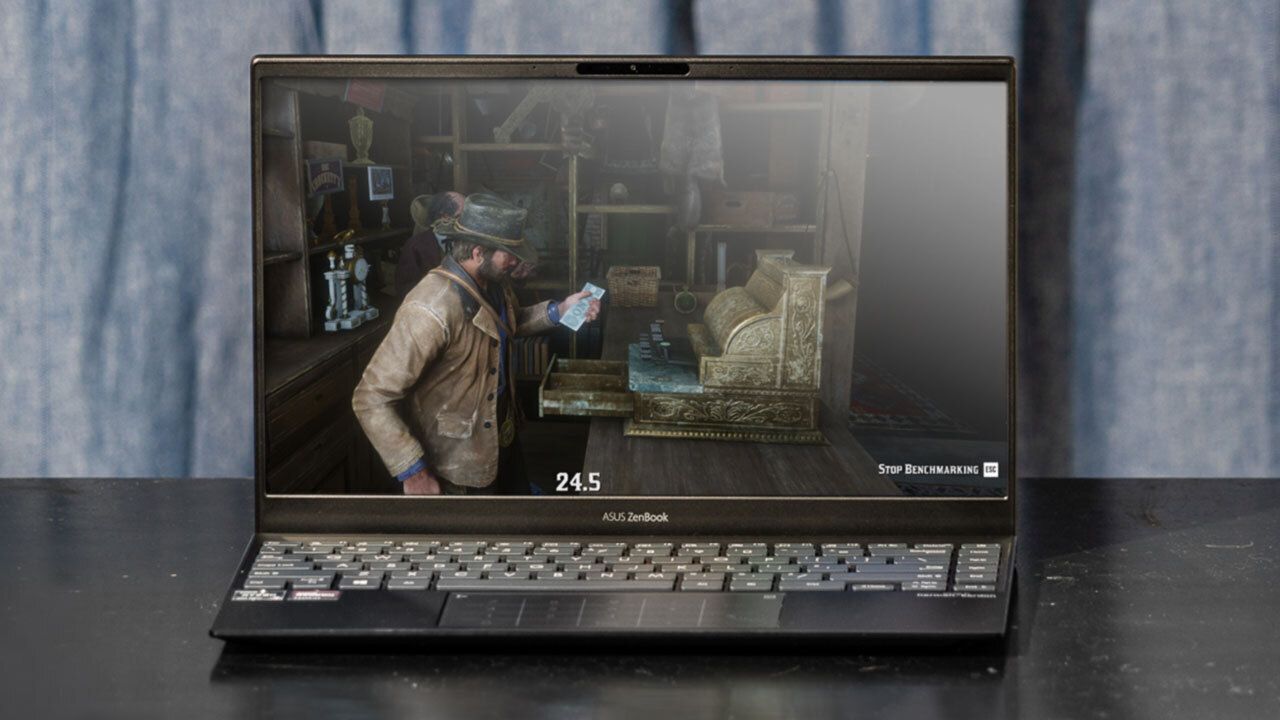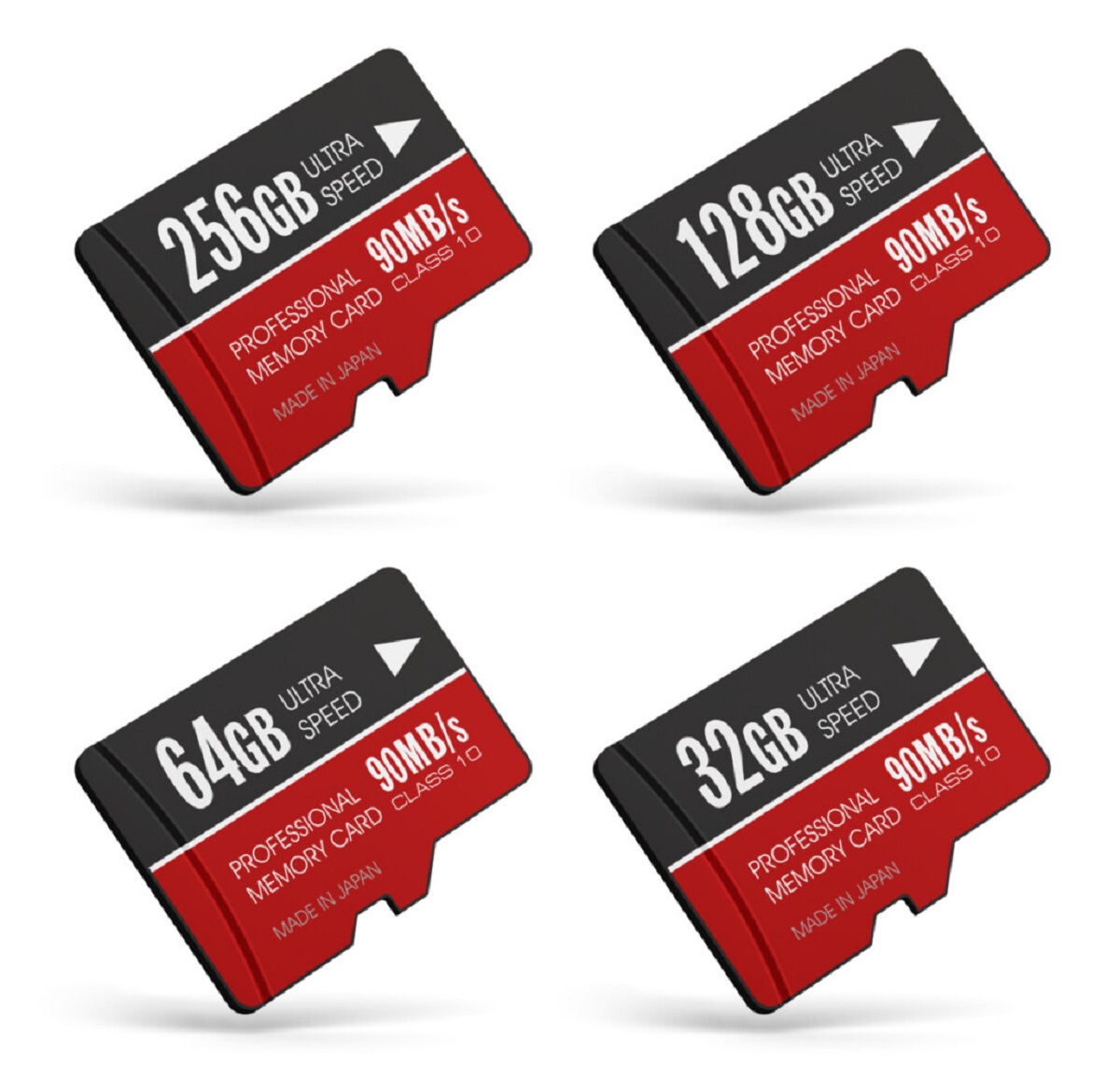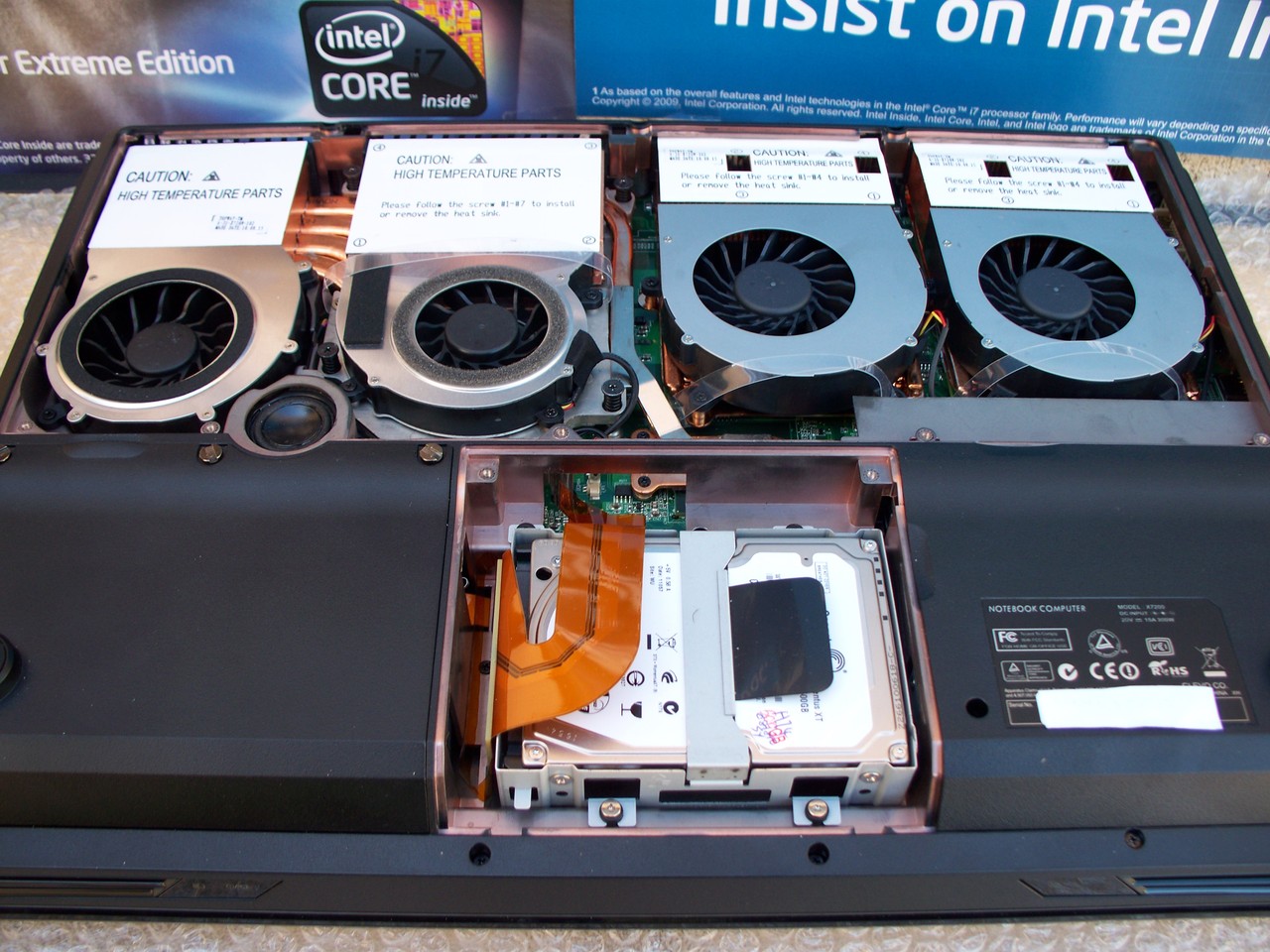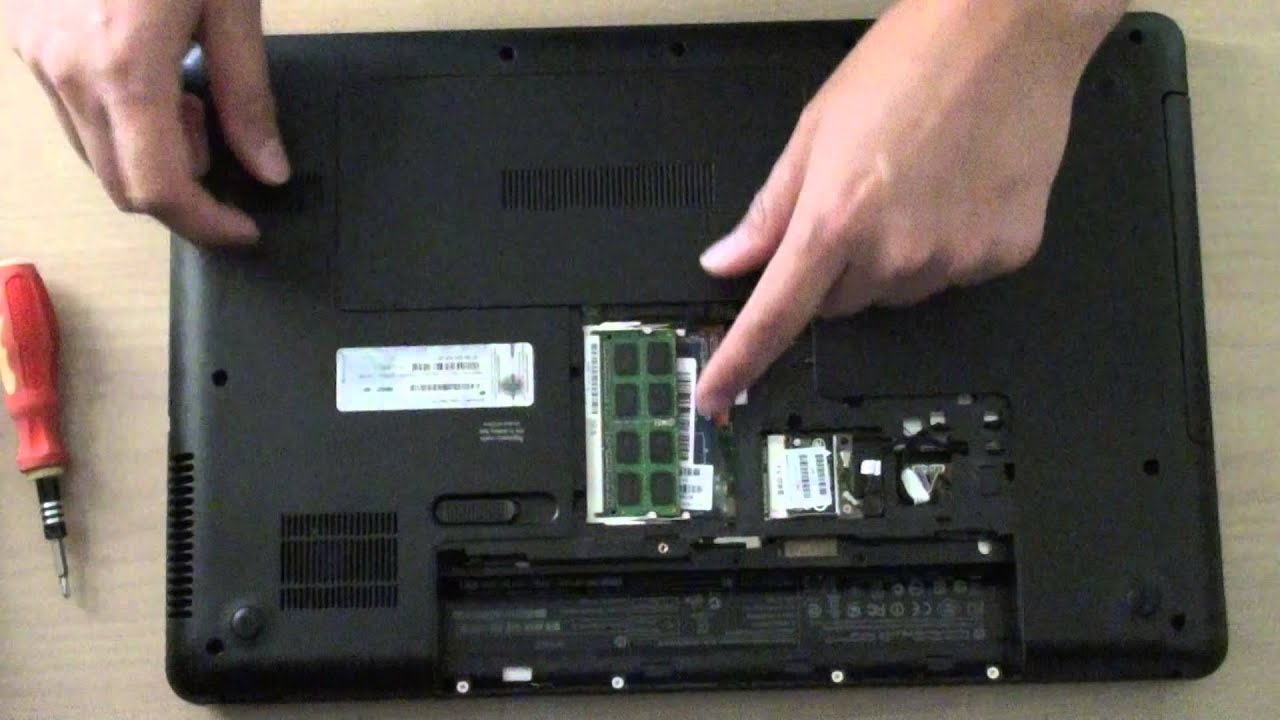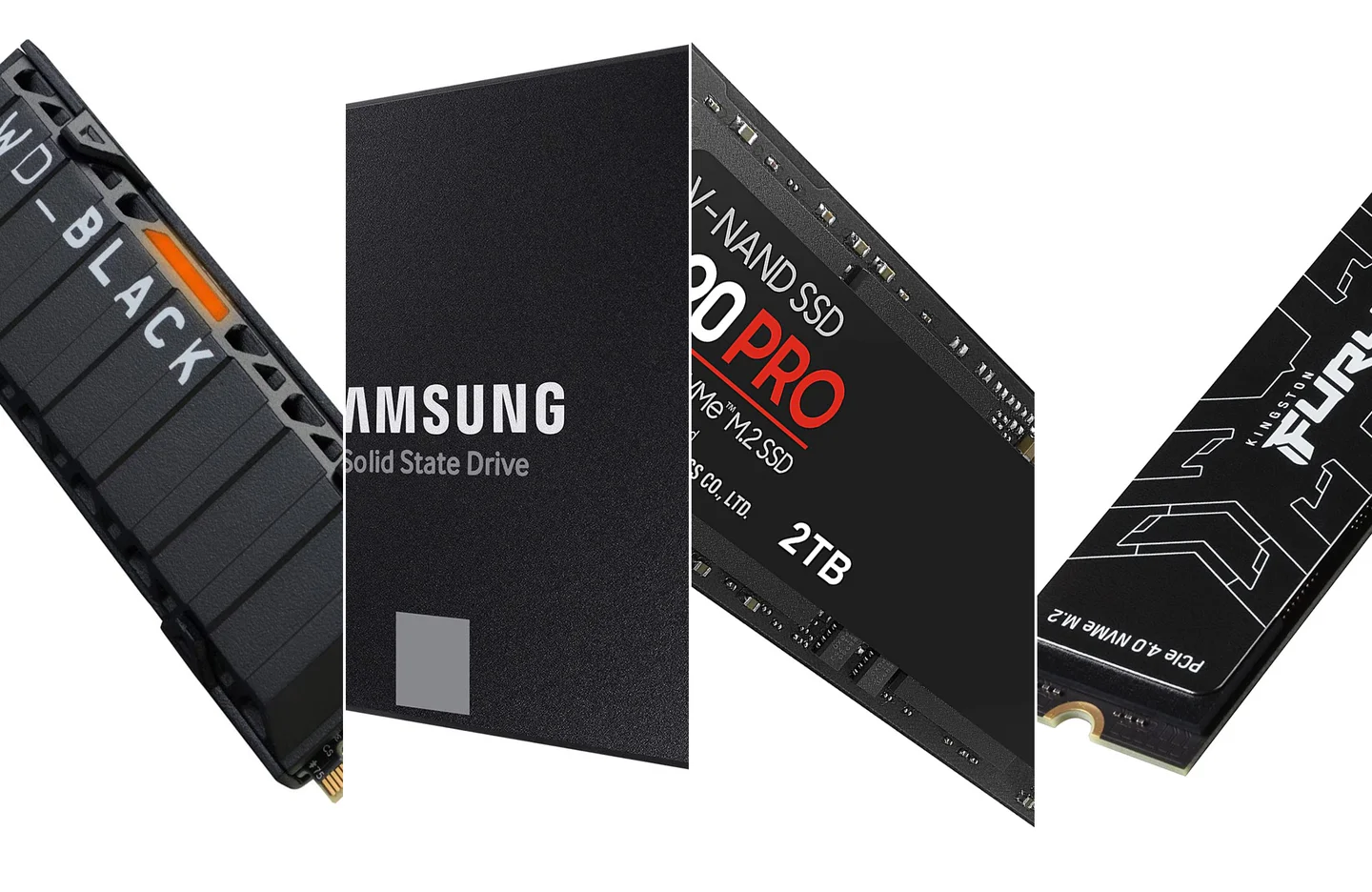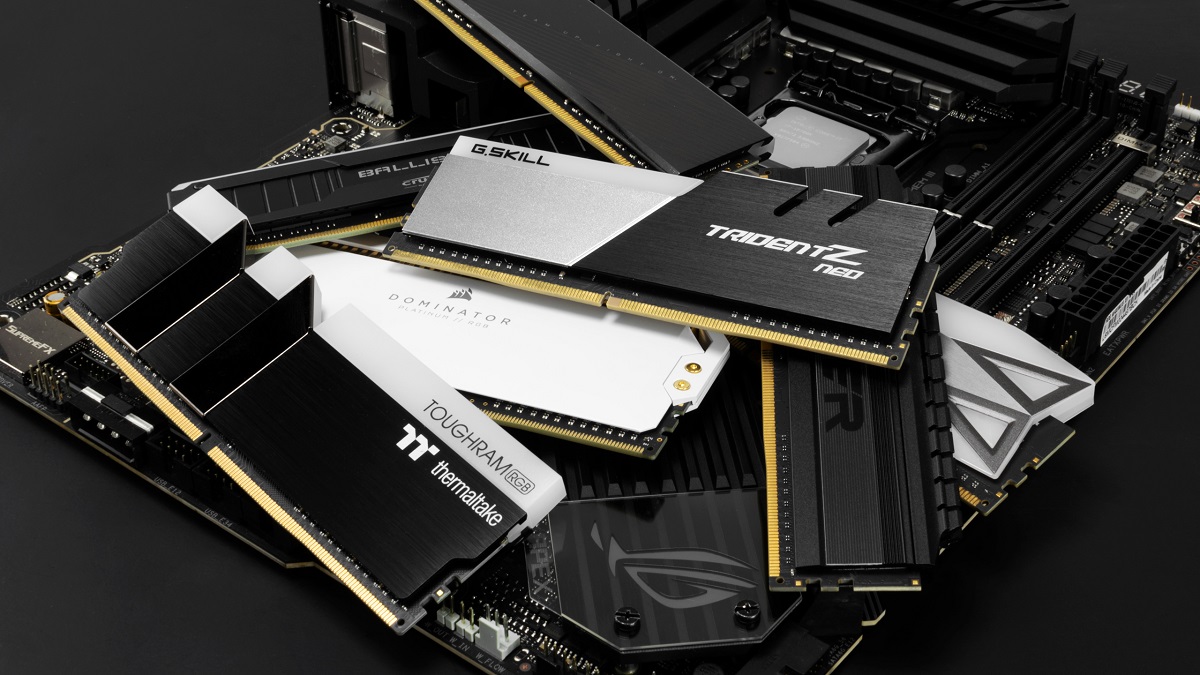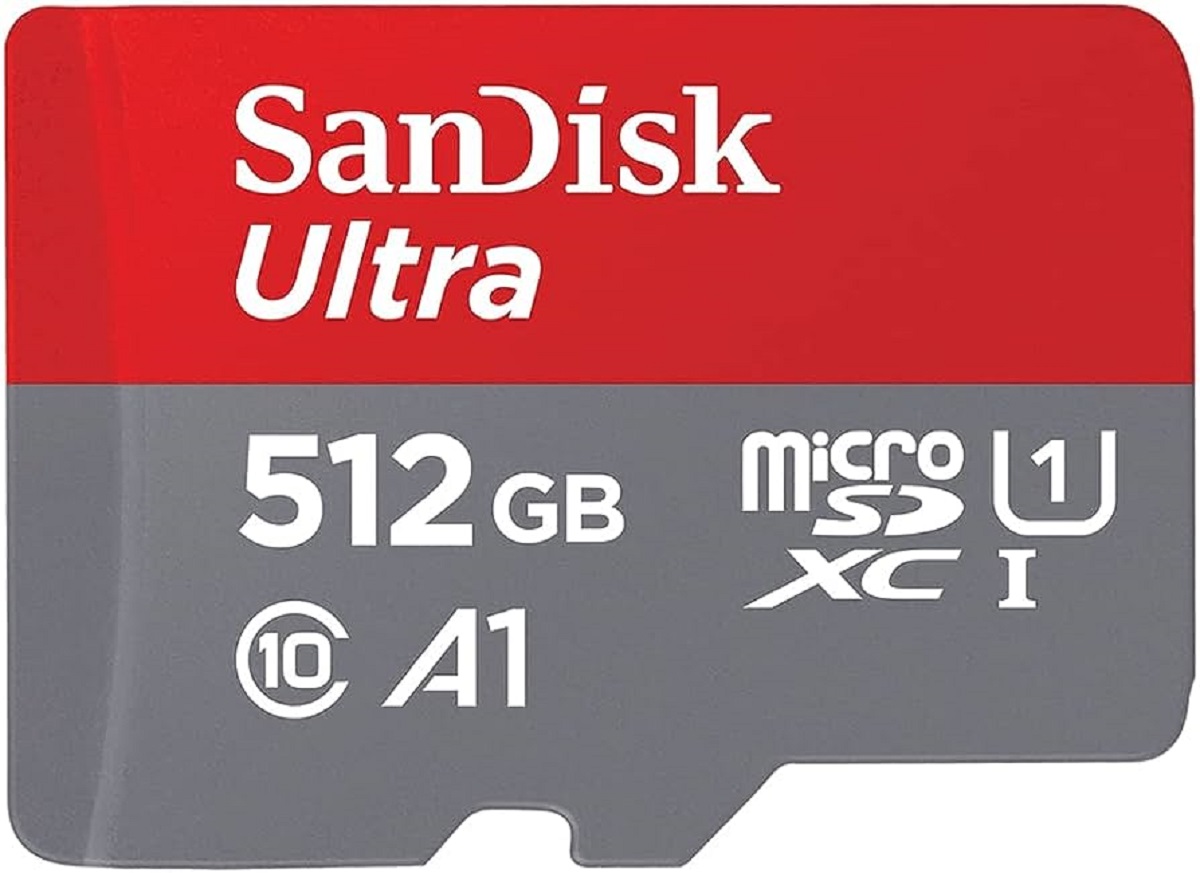Introduction
Gaming laptops are a popular choice for gamers who want the convenience of portable gaming. These powerful machines offer high-performance graphics and processing capabilities to provide an immersive gaming experience. However, it can be frustrating when your gaming laptop suddenly drops to 30 frames per second (FPS) randomly during gameplay.
Frame rate refers to the number of images or frames that are displayed per second in a game. A higher frame rate ensures smooth and fluid gameplay, allowing for precise movements and faster reaction times. When the frame rate drops, it can lead to lag, stuttering, and overall diminished gaming performance.
Understanding why your gaming laptop is experiencing these frame rate drops is crucial in resolving the issue and optimizing your gaming experience. There can be various factors contributing to this problem, ranging from hardware limitations to software conflicts. By identifying and addressing these factors, you can restore your laptop’s performance and enjoy uninterrupted gaming sessions.
In this article, we will explore common causes of frame rate drops on gaming laptops and discuss possible solutions to overcome them. Whether you’re a casual gamer or a competitive player, the information provided here will help you troubleshoot and improve your gaming laptop’s performance.
What is frame rate and why is it important?
Frame rate is a crucial aspect of gaming that directly impacts the smoothness and responsiveness of the gameplay. It refers to the number of frames or images that are displayed per second (FPS) on a gaming monitor or screen. A higher frame rate ensures a more fluid and lifelike gaming experience.
Why is frame rate important? Well, it directly affects the overall gaming performance and the player’s ability to react swiftly to in-game situations. Here are a few reasons why frame rate matters:
- Smooth Gameplay: A high frame rate results in smoother and more responsive gameplay. It ensures that the movements and actions in the game are displayed seamlessly, enabling players to make quick decisions and execute precise maneuvers.
- Reduced Input Lag: When the frame rate is high, there is a noticeable reduction in input lag. Input lag refers to the delay between pressing a key or moving a mouse and seeing the corresponding action on the screen. With a higher frame rate, the time between input and on-screen response is significantly reduced, giving players a more instantaneous and immersive gaming experience.
- Improved Visual Clarity: Higher frame rates also contribute to improved visual clarity, especially during fast-paced and action-packed scenes. This is because more frames per second result in smoother motion and fewer motion artifacts, such as ghosting or blurring, creating a more visually appealing and enjoyable gaming experience.
- Competitive Advantage: In competitive gaming, every millisecond counts. A higher frame rate can provide a competitive edge by allowing players to react faster to their opponents’ actions. It enhances precision aiming, quick reflexes, and overall gameplay performance, giving players an advantage in multiplayer matches.
Overall, frame rate is an essential aspect of gaming that significantly impacts the overall experience. By maintaining a high and consistent frame rate, gamers can fully immerse themselves in the virtual world, enhance their skills, and maximize their enjoyment.
Possible factors causing frame rate drops
Frame rate drops on gaming laptops can be attributed to various factors, ranging from hardware limitations to software conflicts. Understanding these factors is crucial in troubleshooting and resolving the issue. Here are some common causes of frame rate drops:
- Overheating and thermal throttling: Gaming laptops generate significant heat due to the intensive graphics and processing demands. When the laptop’s temperature rises too high, it can trigger thermal throttling, a safety mechanism that reduces the CPU and GPU performance to prevent damage. This can result in frame rate drops during gameplay.
- Insufficient system resources: If your gaming laptop lacks sufficient system resources, such as RAM (Random Access Memory) or a graphics card with inadequate VRAM (Video Random Access Memory), it can lead to frame rate drops. Insufficient resources limit the laptop’s ability to handle the graphical demands of the game.
- Outdated graphics drivers: Graphics drivers play a vital role in optimizing the performance of your gaming laptop. Outdated or incompatible drivers can cause frame rate drops. It is essential to regularly update your graphics drivers to ensure compatibility with the latest games and to benefit from performance improvements.
- Background processes and software conflicts: Background processes and conflicting software can consume system resources and disrupt gameplay performance. Applications running in the background, such as antivirus software or system utilities, can impact the CPU and GPU performance, resulting in frame rate drops.
- Adjusting in-game graphics settings: In some cases, improper in-game graphics settings can strain your gaming laptop and cause frame rate drops. Setting the graphics too high can overload the system, while setting them too low may not optimize the performance. Finding the right balance is crucial to maintaining a smooth frame rate.
Identifying the specific factor causing frame rate drops on your gaming laptop is the first step towards resolving the issue. By addressing these potential causes, you can optimize your laptop’s performance and ensure a smooth gaming experience.
Overheating and thermal throttling
Overheating is a common issue that can cause frame rate drops on gaming laptops. As high-performance components such as CPUs and GPUs generate heat during intensive gaming sessions, it is crucial to manage and control the laptop’s temperature to prevent performance degradation.
When a gaming laptop reaches high temperatures, it may activate a built-in safety feature known as thermal throttling. Thermal throttling is designed to protect the hardware from overheating by reducing the performance of the CPU and GPU. This reduction in performance can result in frame rate drops, lag, and overall diminished gaming experience.
There are several factors that can contribute to overheating and thermal throttling:
- Dust accumulation: Over time, dust and debris can build up inside the laptop’s cooling system, obstructing air circulation and heat dissipation. This can lead to increased temperatures and reduce the effectiveness of the cooling system in keeping the components cool.
- Inadequate cooling: Some gaming laptops may have suboptimal cooling systems, which are unable to effectively dissipate heat generated during heavy gaming sessions. Inadequate cooling can cause the temperatures to rise quickly and trigger thermal throttling.
- Improper usage: Placing the gaming laptop on surfaces that do not allow proper airflow, such as soft cushions or fabric, can impede the cooling system’s performance. Similarly, gaming on an uneven or unstable surface can obstruct the laptop’s ventilation, leading to overheating.
- Intensive gaming sessions: Extended periods of gaming, especially with graphics-intensive games, can stress the laptop’s components and cause the temperature to rise significantly. Lack of breaks or ventilation during gaming sessions can exacerbate the heat buildup.
To mitigate the risk of overheating and prevent thermal throttling, consider the following solutions:
- Clean the cooling system: Regularly clean the laptop’s cooling system, including the vents and fans, to remove dust and debris. Use compressed air or a soft brush to gently clean the components and ensure proper airflow.
- Use a cooling pad: Investing in a cooling pad can provide additional cooling for your gaming laptop. These pads feature built-in fans that enhance airflow, reducing the temperature and preventing overheating.
- Ensure proper ventilation: Place your gaming laptop on a flat, stable surface and ensure that vents and cooling ports are not obstructed. Consider using a laptop stand to improve airflow and keep the components cool during gaming sessions.
- Limit gaming sessions: Take regular breaks during long gaming sessions to allow the laptop to cool down. Consider reducing the graphics settings for particularly demanding games to lessen the strain on the hardware and reduce heat generation.
By addressing overheating issues, you can prevent thermal throttling and ensure that your gaming laptop operates at optimal temperatures, resulting in improved performance and a smooth gaming experience.
Insufficient system resources
Insufficient system resources, such as inadequate RAM (Random Access Memory) or a graphics card with insufficient VRAM (Video Random Access Memory), can contribute to frame rate drops on gaming laptops. These resources play a crucial role in handling the graphics and processing demands of modern games.
If your gaming laptop lacks the necessary system resources, it may struggle to keep up with the demands of graphically-intensive games, resulting in lower frame rates and diminished gaming performance.
Here are a few factors to consider when assessing if your gaming laptop has insufficient system resources:
- Low RAM capacity: The RAM in your gaming laptop is responsible for storing and accessing temporary data while running programs, including games. If your laptop has insufficient RAM, it may not have enough capacity to handle the data required by the game, leading to frame rate drops and overall decreased performance.
- Inadequate VRAM: The VRAM on your graphics card is specifically dedicated to handling the graphical data and textures required by games. If your graphics card has insufficient VRAM, it may struggle to load and process the necessary graphical assets, resulting in lower frame rates and reduced overall visual quality.
- Outdated or lower-end hardware: Older or lower-end gaming laptops may come equipped with hardware that does not meet the recommended system requirements for newer games. In such cases, the hardware may not have enough processing power or memory capacity to handle the demands of modern games, resulting in frame rate drops and compromised performance.
If your gaming laptop has insufficient system resources, there are a few steps you can take to address the issue:
- Upgrade your RAM: If your laptop has limited RAM capacity, consider upgrading it to a higher capacity module or adding additional RAM sticks. This will provide more memory for your laptop to store and access game data, resulting in improved performance and reduced frame rate drops.
- Upgrade your graphics card: If your graphics card has insufficient VRAM, consider upgrading to a more powerful card with higher VRAM capacity. This will allow your laptop to load and process graphical assets more efficiently, resulting in smoother gameplay and improved frame rates.
- Optimize in-game settings: Adjusting the in-game graphical settings can help alleviate the strain on your system resources. Lowering settings such as texture quality, resolution, and shadow detail can reduce the demands on your hardware and improve frame rates while still providing an enjoyable gaming experience.
- Close unnecessary applications: Before running a game, close any unnecessary applications and processes running in the background. This will free up system resources and allow your gaming laptop to allocate more power to the game, resulting in improved performance and fewer frame rate drops.
By addressing the issue of insufficient system resources, you can enhance your gaming laptop’s performance and ensure smoother gameplay with higher frame rates.
Outdated graphics drivers
The graphics drivers in your gaming laptop play a vital role in optimizing its performance, especially when it comes to gaming. Outdated or incompatible graphics drivers can cause frame rate drops and other performance issues.
Graphics drivers serve to facilitate communication between the operating system and the graphics card installed in your laptop. They ensure that the graphics card operates efficiently and effectively, providing the necessary support for running games and rendering graphics.
If you’re experiencing frame rate drops on your gaming laptop, outdated graphics drivers could be a potential cause. Here are a few reasons why outdated graphics drivers can affect your gaming performance:
- Lack of optimization: Graphics drivers undergo continuous updates to improve performance, stability, and compatibility with the latest games. If your graphics drivers are outdated, they may not be optimized for newer games, resulting in lower frame rates and subpar gaming performance.
- Compatibility issues: As new games are released, the developers often optimize them to work seamlessly with the latest graphics drivers. If your drivers are outdated, they may not be compatible with the game you’re playing, leading to compatibility issues, graphical glitches, and frame rate drops.
- Bug fixes and performance improvements: Driver updates often include bug fixes and performance improvements that can enhance your gaming experience. Outdated drivers may lack these updates, leaving you susceptible to performance issues, including frame rate drops.
To address the issue of outdated graphics drivers, follow these steps:
- Check for driver updates: Visit the website of your laptop manufacturer or the graphics card manufacturer to check for the latest graphics driver updates. Most manufacturers provide software or tools that automatically detect and update the drivers for you.
- Install the latest drivers: Download and install the latest graphics drivers provided by the manufacturer. Make sure to follow the installation instructions carefully and restart your laptop if prompted.
- Enable automatic driver updates: To ensure that your graphics drivers remain up-to-date, enable automatic driver updates in the graphics card software or the driver management tool provided by the manufacturer. This way, you’ll receive notifications and can easily install the latest updates.
- Uninstall old drivers: If you encounter issues after updating to the latest graphics drivers, consider uninstalling the old drivers first. Use a tool like Display Driver Uninstaller (DDU) to completely remove the previous drivers and then proceed with installing the updated drivers.
By keeping your graphics drivers up-to-date, you can optimize your gaming laptop’s performance, resolve compatibility issues, and minimize frame rate drops, providing a smoother and more enjoyable gaming experience.
Background processes and software conflicts
Background processes and software conflicts can significantly impact the performance of your gaming laptop and lead to frame rate drops during gameplay. While you may not be actively using these applications, they can consume system resources and interfere with the smooth operation of your games.
Here are a few factors related to background processes and software conflicts that can contribute to frame rate drops on your gaming laptop:
- Background applications: Applications running in the background, such as antivirus software, system utilities, or software update services, can consume CPU and memory resources. When these resources are allocated to background processes, it leaves fewer resources available for your game, ultimately resulting in reduced frame rates.
- Software conflicts: Conflicts between different software applications can cause performance issues on your gaming laptop. For example, two security applications running simultaneously can lead to conflicts, with each software trying to perform its tasks simultaneously and taxing system resources, causing frame rate drops and other performance issues.
- Resource-intensive applications: Certain resource-intensive applications, such as video editing software or file-sharing programs, can compete for system resources with your games. These applications can consume CPU, memory, and network bandwidth, impacting the performance of your gaming laptop and leading to frame rate drops.
Here’s how you can address background processes and software conflicts to improve your gaming experience:
- Close unnecessary applications: Before launching your game, close any unnecessary applications running in the background. Use the task manager to identify resource-intensive processes and end them to free up system resources for your game.
- Disable non-essential startup programs: Some applications automatically launch when your laptop boots up, consuming system resources from the start. Disable non-essential programs from the startup list to prevent them from running in the background and interfering with your game.
- Manage software conflicts: If you notice conflicts between different software applications, consider disabling or uninstalling one of the conflicting programs. This will help eliminate the conflicts and ensure better performance during gaming sessions. Additionally, ensure that your software applications and drivers are up-to-date to minimize compatibility issues and conflicts.
- Optimize power settings: Adjust your laptop’s power settings to prioritize performance over power saving. This can help allocate more resources to your game and reduce the impact of background processes on frame rates.
By managing background processes and resolving software conflicts, you can optimize your gaming laptop’s performance, minimize frame rate drops, and enjoy a smoother gaming experience.
Adjusting in-game graphics settings
When it comes to optimizing your gaming laptop’s performance and combating frame rate drops, adjusting the in-game graphics settings can play a crucial role. Each game offers a range of graphics options that allow you to balance visual quality and performance. Fine-tuning these settings can help alleviate strain on your hardware and maintain a smoother frame rate during gameplay.
Here are some key considerations when adjusting in-game graphics settings:
- Resolution: Lowering the resolution of the game can significantly improve performance, as it reduces the number of pixels the GPU needs to render. However, keep in mind that lower resolutions may result in a less detailed and visually appealing image.
- Texture quality: Texture quality affects the detail and sharpness of in-game textures. While higher-quality textures provide a more visually pleasing experience, they can also strain your GPU. Adjusting the texture quality to a lower setting can relieve the workload on your GPU and lead to smoother frame rates.
- Shadow and lighting effects: Realistic shadows and lighting effects can enhance the visual experience, but they also require significant processing power. It may be beneficial to lower or disable shadow and lighting effects to optimize performance, especially in the case of older or less powerful gaming laptops.
- Anti-aliasing: Anti-aliasing smooths jagged edges on in-game objects, resulting in a cleaner and more visually appealing image. However, this graphical effect can be demanding on your GPU. Adjusting the anti-aliasing settings to a lower level or disabling it can help improve frame rates without sacrificing the overall visual experience too much.
- Effects and post-processing: Some games offer additional graphical effects and post-processing options, such as motion blur or depth of field. Disabling or reducing these effects can help optimize performance and maintain a smoother frame rate.
To adjust in-game graphics settings effectively, consider implementing the following steps:
- Experiment and find the right balance: Adjust the graphics settings incrementally while monitoring the impact on performance. Find the optimal settings that provide an acceptable balance between visual quality and frame rate stability.
- Monitor frame rate: Use software utilities or in-game performance monitoring tools to track your frame rate while adjusting the settings. This will help you identify the specific settings that have the most significant impact on performance.
- Consider your hardware: Take into account the capabilities of your gaming laptop’s hardware when adjusting the settings. High-end gaming laptops can handle more demanding graphics settings, while older or less powerful laptops may require more conservative adjustments.
- Update your graphics drivers: Ensuring that your graphics drivers are up-to-date can also improve compatibility and optimize performance for specific games. Check for driver updates and install them as needed.
By adjusting the in-game graphics settings based on your gaming laptop’s capabilities, you can optimize performance, minimize frame rate drops, and enjoy a smoother and more enjoyable gaming experience.
Cleaning your laptop’s internals
Over time, dust and debris can accumulate inside your gaming laptop, particularly in the cooling system and fan vents. This buildup can obstruct airflow and hinder the cooling efficiency of your laptop, leading to increased temperatures and potential performance issues such as frame rate drops. Cleaning your laptop’s internals is an essential maintenance task that can help prevent overheating and optimize performance.
Here are some key steps to effectively clean your laptop’s internals:
- Gather essential tools: Before getting started, gather the necessary tools, including compressed air, lint-free cloths, a soft brush or toothbrush, and isopropyl alcohol.
- Power off and unplug your laptop: Ensure your laptop is powered off and unplugged before starting the cleaning process to avoid any electrical hazards.
- Remove the battery (if removable): If your laptop has a removable battery, carefully remove it to prevent any accidental damage during the cleaning process.
- Clean the exterior: Start by wiping the exterior of your laptop using a lint-free cloth and isopropyl alcohol. This will remove any surface dirt or smudges.
- Open the laptop: Refer to your laptop’s user manual or online resources to understand how to access the internals. In most cases, you will need to remove the bottom panel or keyboard to access the cooling system.
- Clean the cooling system: With the internals exposed, use compressed air to blow out any dust or debris from the cooling vents, fan blades, and heat sink. Ensure you hold the can of compressed air upright and use short bursts to prevent moisture buildup. Use a soft brush or toothbrush to gently dislodge and remove any stubborn dust particles.
- Clean other internal components: While the laptop is open, take the opportunity to inspect and clean other internal components, such as the RAM modules and storage devices. Use a clean, dry cloth to wipe away any dust or fingerprints.
- Reassemble the laptop: Carefully reassemble the laptop, ensuring that all components are properly aligned and seated. Replace the bottom panel or keyboard and secure any screws or latches as necessary.
- Test your laptop: Power on your laptop and observe if there is any improvement in performance. Monitor the temperature and performance during gaming sessions to ensure that the cleaning process has effectively resolved any temperature-related issues.
Regularly cleaning your gaming laptop’s internals can help maintain optimal airflow, prevent overheating, and minimize the occurrence of frame rate drops. Aim to clean your laptop at least once every few months or more frequently if you notice significant dust buildup.
Upgrading hardware components
If you’re experiencing persistent frame rate drops on your gaming laptop despite trying other troubleshooting methods, it may be time to consider upgrading certain hardware components. Upgrading hardware can provide a significant boost to your laptop’s performance and help eliminate frame rate drops caused by outdated or underpowered components.
Here are some hardware components you can consider upgrading to improve your gaming laptop’s performance:
- RAM (Random Access Memory): Upgrading your laptop’s RAM can have a significant impact on performance, especially if you currently have a lower amount of RAM. Increasing the RAM capacity allows your laptop to handle more data and execute tasks more efficiently, reducing frame rate drops and improving overall gaming performance.
- Storage: If your gaming laptop is equipped with a traditional hard drive (HDD), upgrading to a solid-state drive (SSD) can improve load times and reduce stuttering during gameplay. SSDs offer faster data transfer rates, allowing for quicker access to game files and smoother performance.
- Graphics card: The graphics card is a critical component for gaming performance. If your laptop has a dedicated graphics card, upgrading to a more powerful model with better VRAM can significantly enhance your gaming experience. A higher-end graphics card can handle graphically demanding games and provide smoother frame rates at higher settings.
- CPU (Central Processing Unit): While upgrading the CPU in a laptop is more challenging than other components, it can provide a substantial performance boost if you’re experiencing frame rate drops due to a CPU bottleneck. If your laptop model allows for CPU upgrades and you have the technical know-how, consider installing a faster processor to improve gaming performance.
- Battery: Although the battery may not directly affect frame rates, a worn-out or faulty battery can result in power delivery issues, impacting overall laptop performance. If you’re experiencing power-related performance issues, replacing the battery can help ensure consistent power supply and prevent excessive throttling.
Before upgrading any hardware components, research your laptop model to determine if it allows for component upgrades. Some laptops have limited upgrade options or may require professional assistance for certain upgrades.
Additionally, consider the cost-benefit analysis of upgrading versus purchasing a new gaming laptop. Depending on the age and specifications of your current laptop, it may be more cost-effective to invest in a new laptop rather than upgrading multiple components.
Upgrading hardware components can breathe new life into your gaming laptop, improving performance and eliminating frame rate drops caused by inadequate hardware. Assess your needs, budget, and compatibility carefully before making any hardware upgrade decisions.
Conclusion
Experiencing frame rate drops on your gaming laptop can be frustrating, but through a systematic troubleshooting process, you can identify and resolve the underlying issues. By addressing possible factors such as overheating, insufficient system resources, outdated graphics drivers, background processes, and software conflicts, adjusting in-game graphics settings, cleaning your laptop’s internals, and upgrading hardware components, you can optimize your gaming laptop’s performance and enjoy a smooth and immersive gaming experience.
Investigating overheating issues, ensuring adequate cooling, cleaning the laptop’s internals, and addressing thermal throttling concerns are crucial steps to prevent frame rate drops caused by high internal temperatures. Likewise, ensuring your gaming laptop has sufficient system resources, including RAM and VRAM, is important to meet the graphical demands of modern games.
Updating your graphics drivers and resolving any software conflicts or background processes can help eliminate performance issues and ensure compatibility with the latest games. Adjusting in-game graphics settings to find the right balance between visual quality and performance is essential in maintaining a smooth frame rate.
Regularly cleaning your laptop’s internals removes dust and debris that can obstruct airflow and lead to overheating, while upgrading hardware components such as RAM, storage, graphics card, CPU, or battery can provide a significant boost to your gaming laptop’s performance.
Remember, every gaming laptop is unique, and the factors contributing to frame rate drops may vary. Trial and error, along with careful monitoring of your laptop’s performance, will ultimately help you pinpoint and resolve the specific issues affecting your gaming experience.
By implementing the troubleshooting steps and solutions discussed in this article, you can enhance your gaming laptop’s performance, minimize frame rate drops, and enjoy a seamless and thrilling gaming experience.







